One of the reasons that I came to the Amazon was to visit an indigenous tribe. Another was Swimming with the pink dolphin.
I grew up watching so many programs about indigenous people, specially the ones in the Amazon, that I was very curious to have at least a minimum contact with them. In Brazil we even have one day to celebrate the indigenous culture.
There are around 400 indigenous tribes in the Amazon, each of them with its own language, culture and territory.
Some of the largest tribes in the Brazilian Amazon rainforest are Yanomami and Xingu. They live in an area of approximately 96,650Km2 and 26,420Km2, and have a population of 35,000 and 7,000 indigenous people respectively.
Many indigenous tribes have had contact with outsiders for almost 500 years, while others ‘uncontacted’ tribes have had a minimum contact or no contact at all.
While visiting the most well-known Amazonian tribes can be hard, you can visit others when you’re in Manaus, Amazona’s capital.
This was exactly what I did, and in this post I’m going to share my experience with you.
* Affiliate disclosure: Some of the links below are affiliate links, meaning I earn a small fee if you click through and make a purchase. There is never any additional cost to you, and I use some of these earnings for my monthly charitable donations.
Table of Contents
Visiting Aldeia Cipiá, an Indigenous Tribe in the Amazon
The indigenous tribe that I visit while touring in Manaus, Aldeia Cipiá, lives around 80Km of the city. But despite its proximity to a big metropolis, they still preserves its old habits.
When the boat arrived we were welcomed in a big hangar made of wood and fibres, decorated with indigenous paintings, by the shaman (the chief of the tribe). A man in his 60’s, with the face partially painted, wearing a swimming suit covered with a piece of a painted sheet on the front and leaf on the back, a beautiful necklace made of jaguar teeth, and a crow adorned with colorful feathers.
I sat down close to some members of the indigenous tribe and started to talk to a good-looking one by my side. But he was so shy that the dialogue was very short…
They all had gorgeous necklaces made of seeds, feathers and shells. Their faces were painted, the men had awesome crows and women ravishing earrings.
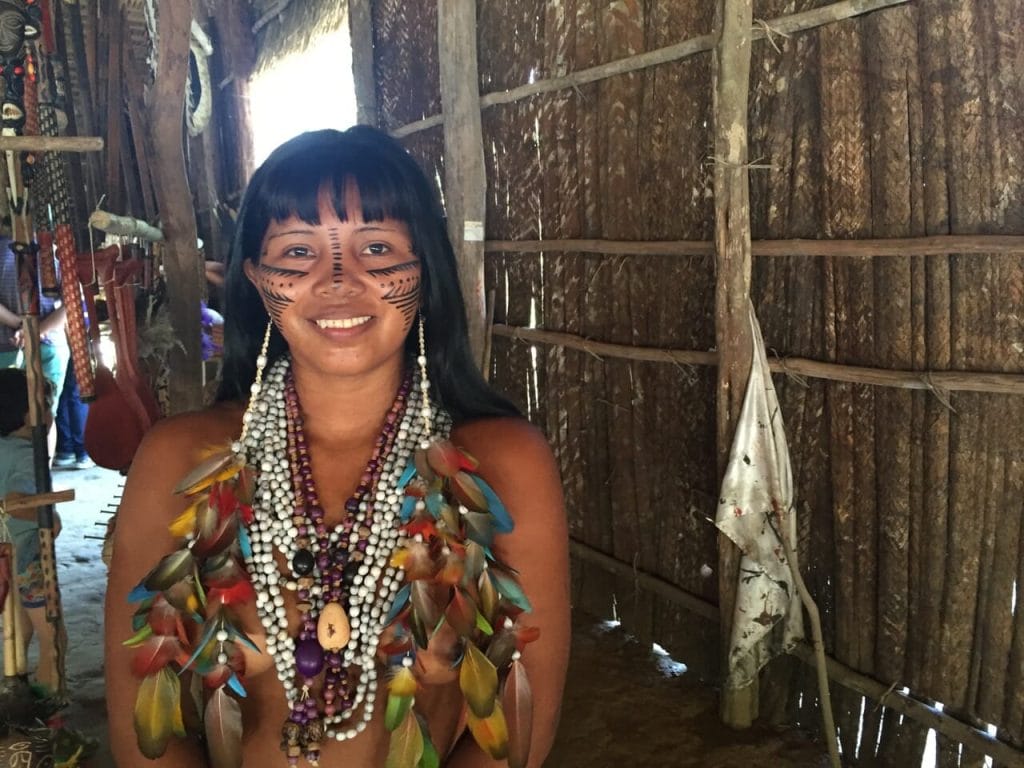
The Rituals
The xamã started the presentation of the rituals to receive visitors.
The first was Jurupari’s dance, a supernatural god’s dance. Because of that there is no participation of the indigenous women and children and they never saw the instrument.
The teenagers guys took their big blower wood instruments and started making an interesting sound out of it, and moving it up and down.
The rituals were just starting and I was exhilarating!
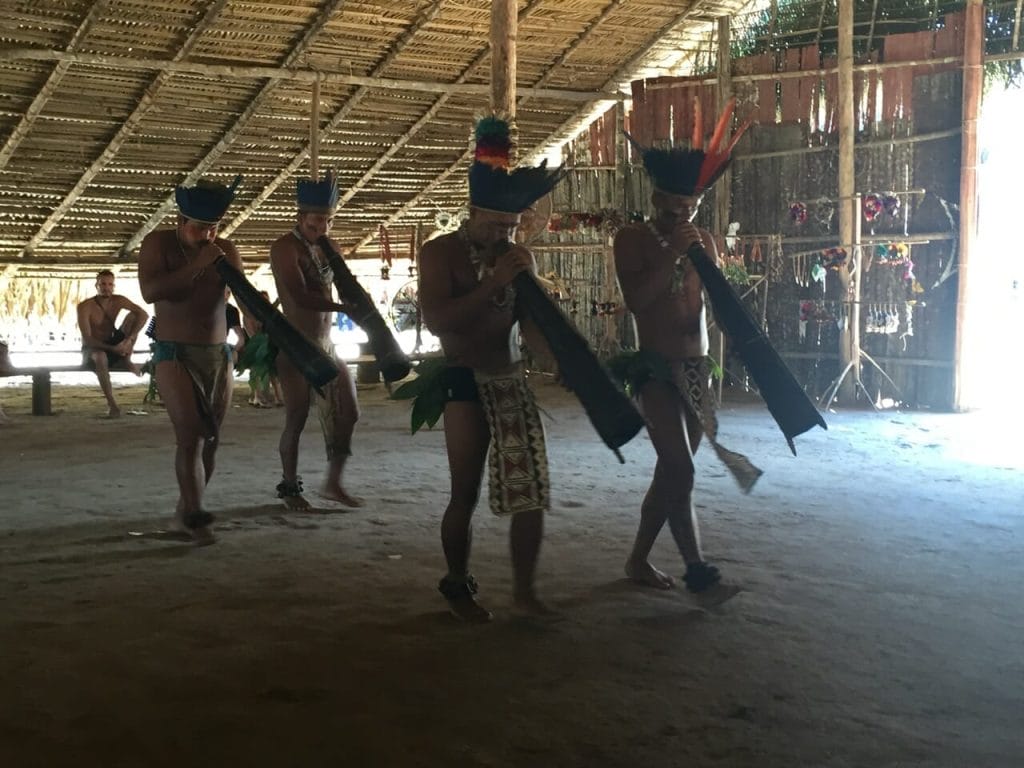
The next was Japurutú’s dance executed only by the men and means offer of fruit, fishes, meat or crafts.
They made a big circle, put their left arm on the right shoulder of the person in front, started to sing on their on language and make sounds with their instruments.
One by one, women lined up in the middle of the circle and then every woman held every other man to do the Capiwayá’s dance. This dance means “serve me” and was created to socialize and mix the languages and races, as in the beginning they were all brothers and sisters and no one could get married.
They continued to sing and spin around the hangar using bamboos, rattles, clappers and wands.
I was in awe witnessing an indigenous ritual for the first time in my life!
In the end the started to play a very festive song with their flutes for the Reunion dance. The men invited visitors women and the women invited visitors men to join them.
It was a big celebration of the indigenous culture and heritage that is becoming very rare to preserve.
Everyone of us, Brazilians and foreigners were moved in the end of the presentation.
Their habitat
We had some free time to visit the village and also to by handicrafts.
They leave in a very simple way, in few houses similar to the hangar in the middle of the forest, and sleep in hammocks.
I took the opportunity to talk to a teenager girl who spoke perfect Portuguese and the indigenous tribe dialect and she told me that she goes to a school close by.
I also spoke with the shaman, who told me that they also receive overnight visitors and that the daily activities are fishing and hiking in the forest.
I left the indigenous tribe very happy to see that they still preserve their culture, which is also my own culture that was lost after generations of generations of my family.
I felt also proud of the miscegenation of the Brazilian population, because in the end we are all indigenous.
Safe travels and have fun in the Amazon.
- You can book this tour to visit Aldeia Cipiá here, or if you want to witness a Tucandeira Ants Tribe Ritual, a male initiation, book this one.
Watch video: Visiting an indigenous tribe in the Amazon.
Tips for Visiting Manaus
Where is Manaus?
Manaus, capital of Amazonas state, northwestern Brazil lies along the north bank of the Negro River, 11 miles (18Km) above that river’s influx into the Amazon River (see exact location here).
How to get there?
Manaus is surrounded by rivers and the best way to get there is by boat or airplane.
By airplane
Sadly there aren’t many international companies flying direct to Manaus. Some of them companies are: American Airlines, Copa Airlines and TAP.
Although there are plenty of flights from several cities in Brazil, specially from São Paulo and Brasília. The companies that fly frequently to Manaus are: TAM, Gol, Azul and Passaredo.
Book your flights with Skyscanner, that is the website that I use and trust.
By boat
There are many boats connecting Manaus with other cities in the North of Brazil, and also with Colombia and Peru. Those boats are huge and you sleep in a hammock.
To Colombia and Peru it takes in general one week.
One of the most common trips is from Manaus to Belem (Pará’s capital). It takes 5 days and you can book it online in advance here.
Best time to visit Manaus?
There are basically two seasons in Manaus: the rainy and high humidity season (from December to April), and the dry and very hot season (from July to September).
So, the best time to go is the shoulder season: May/June and October/November.
I was there for seven days in the beginning of April of 2016 and four days the weather was sunny and hot, one cloudy day, and two days with heavy rain.
Where to stay?
I stayed at Local Hostel Manaus and I loved it.
If you’re looking for another kind of accommodation, I suggest:
- Great value for money: Hotel Adrianópolis All Suites and Intercity Manaus.
- Luxury: Juma Ópera and Hotel Vila Amazônia.
Travel costs
- Flight from São Paulo to Manaus: R$ 349 (US$ 100).
- Five nights at Local Hostel Manaus: R$ 235 (US$ 67).
- Tour with Amazing Tours: R$ 300 (US$ 86).
* Prices of 2016.
Extra tips
- For more information about Manaus visit: www.visitamazonastour.com
- To check boat schedules and prices visit: www.portodemanaus.com.br
P.S.: Don’t forget to take the yellow fever vaccine at least ten days prior to arrival.
Other Tours in Manaus
∗ I was invited by Amazing Tours and all the opinions here are on my own and unbiased.
- Book Your Flight Find deals on airlines on my favorite search engine: Skyscanner. Be sure to read my How to find cheap flights article.
- Rent A Car Rental Cars is a great site for comparing car prices to find the best deal.
- Book Accommodation Booking.com is my favorite hotel search engine. But Hotels.com and Hilton Hotels have very interesting reward programs.
- Protect Your Trip Don’t forget travel insurance! I always use World Nomads for short-term trips and SafetyWing for long-term ones. Find out why Travel Insurance: Much More Than a Precaution, a Necessity.
- Book Tours in Advance Book unforgettable experiences and skip-the-line tickets with GetYourGuide or Viator .
- Book Ground Transportation BookaWay offers a stress-free experience with secure payments and no hidden fees. You pay online and receive your itinerary by email.
- Luggage Solutions Rent your luggage with Cargo or if you need to drop off your own luggage and enjoy your time without dragging it all over a city, find a LuggageHero shop here.
- Get a Travel Card Revolut Card is a pre-paid debit card that enables cash machine withdrawals in 120 countries. I’ve been using my Revolut Card for over a year and never paid foreign-transaction fees again. Get your Revolut Card with free shipping here.
- Packing Guide Check out my How to Pack a Carry-on Luggage For a Five-month Trip to help you start packing for your trip. Don’t forget your camera, chargers and other useful travel accessories. World Nomads provides travel insurance for travelers in over 100 countries. As an affiliate, we receive a fee when you get a quote from World Nomads using this link. We do not represent World Nomads. This is information only and not a recommendation to buy travel insurance.

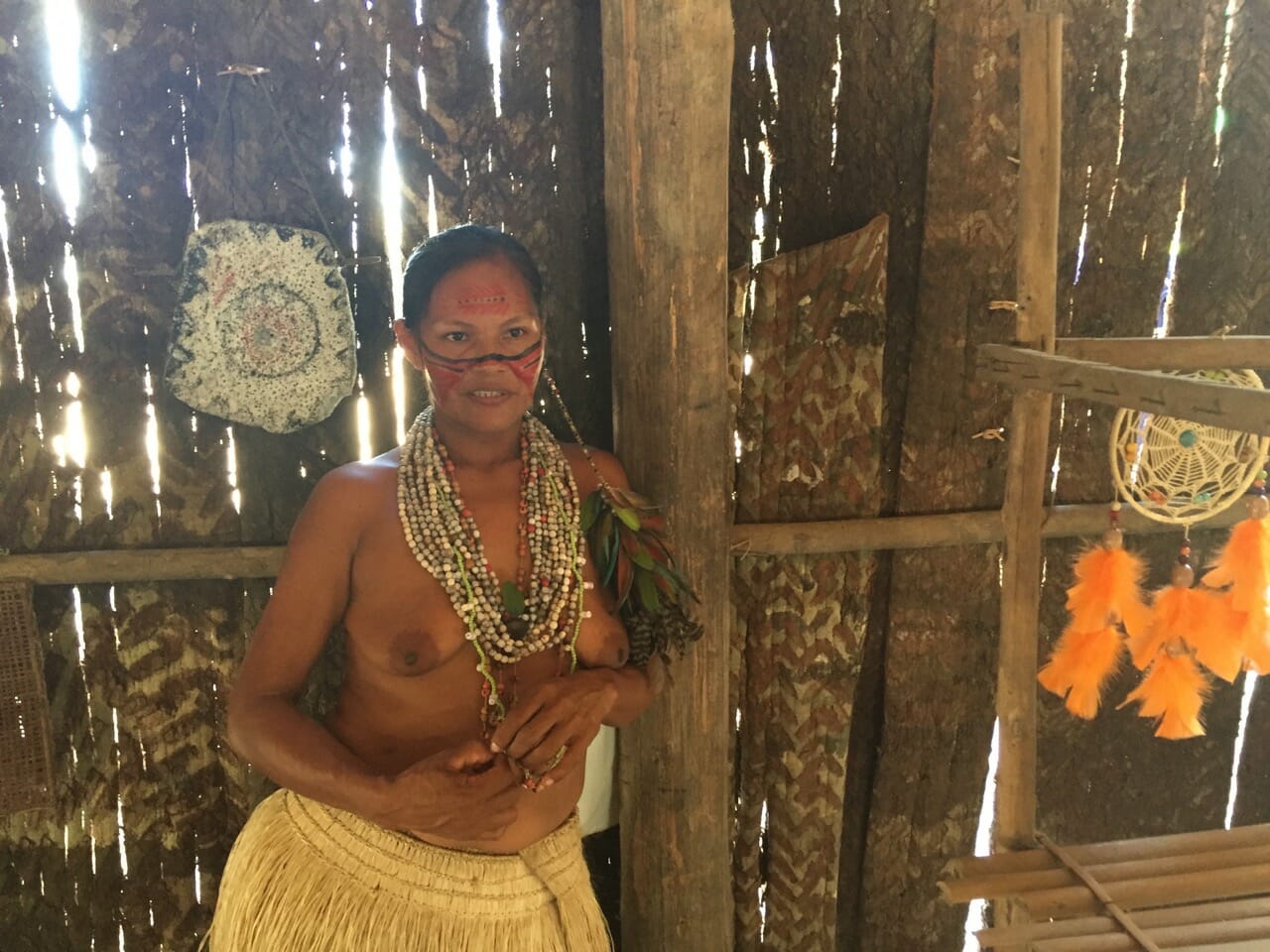
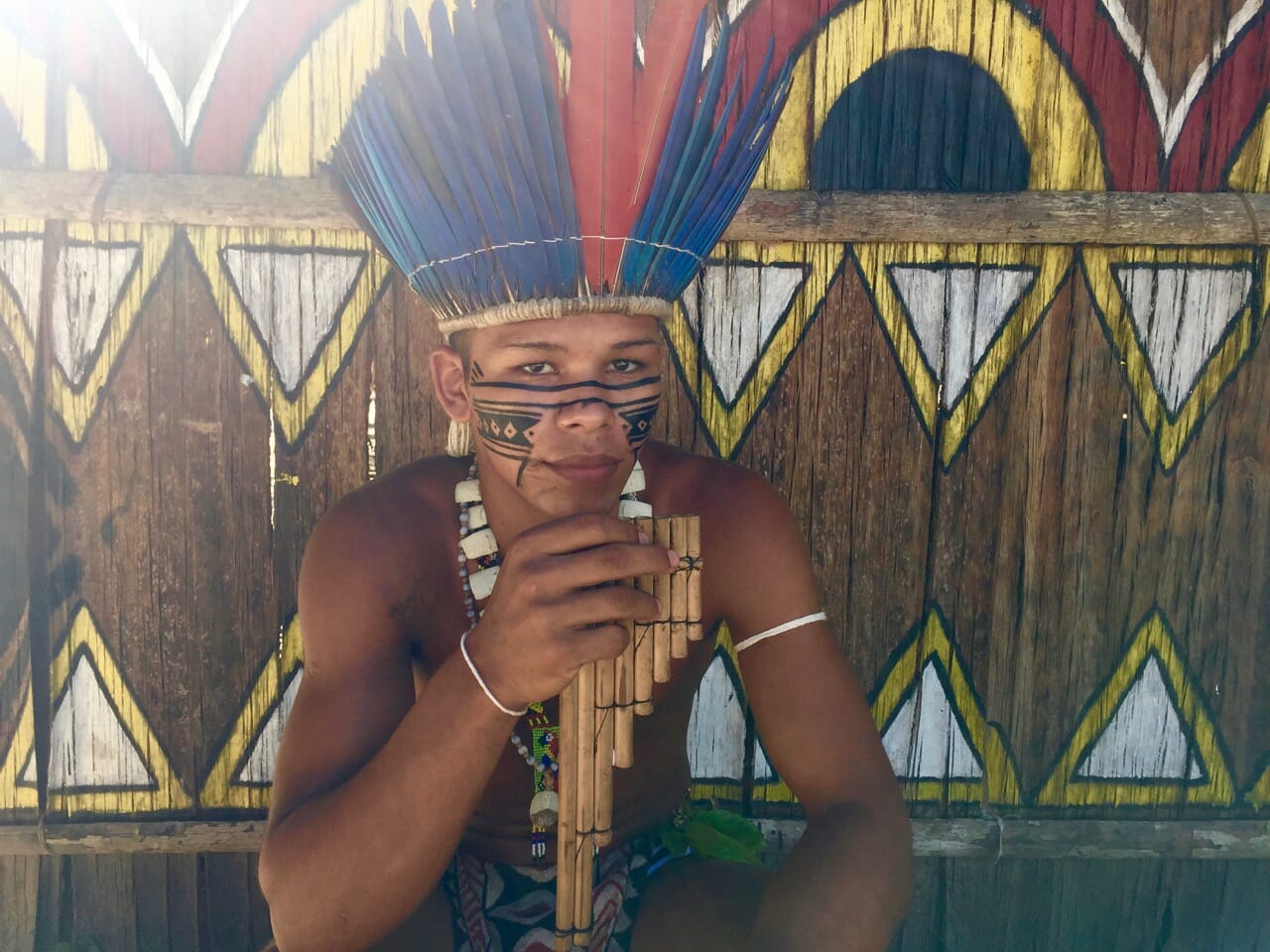
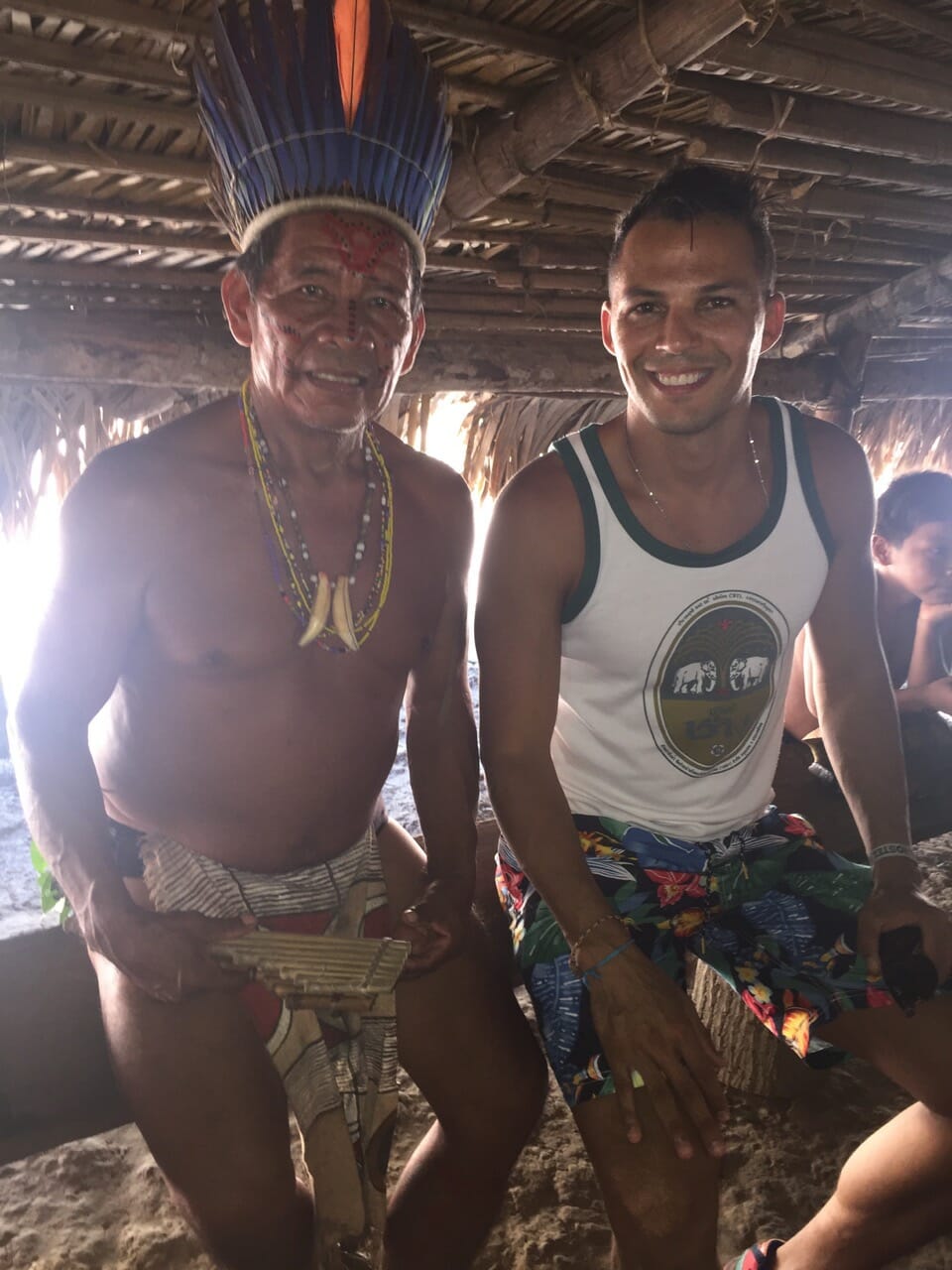
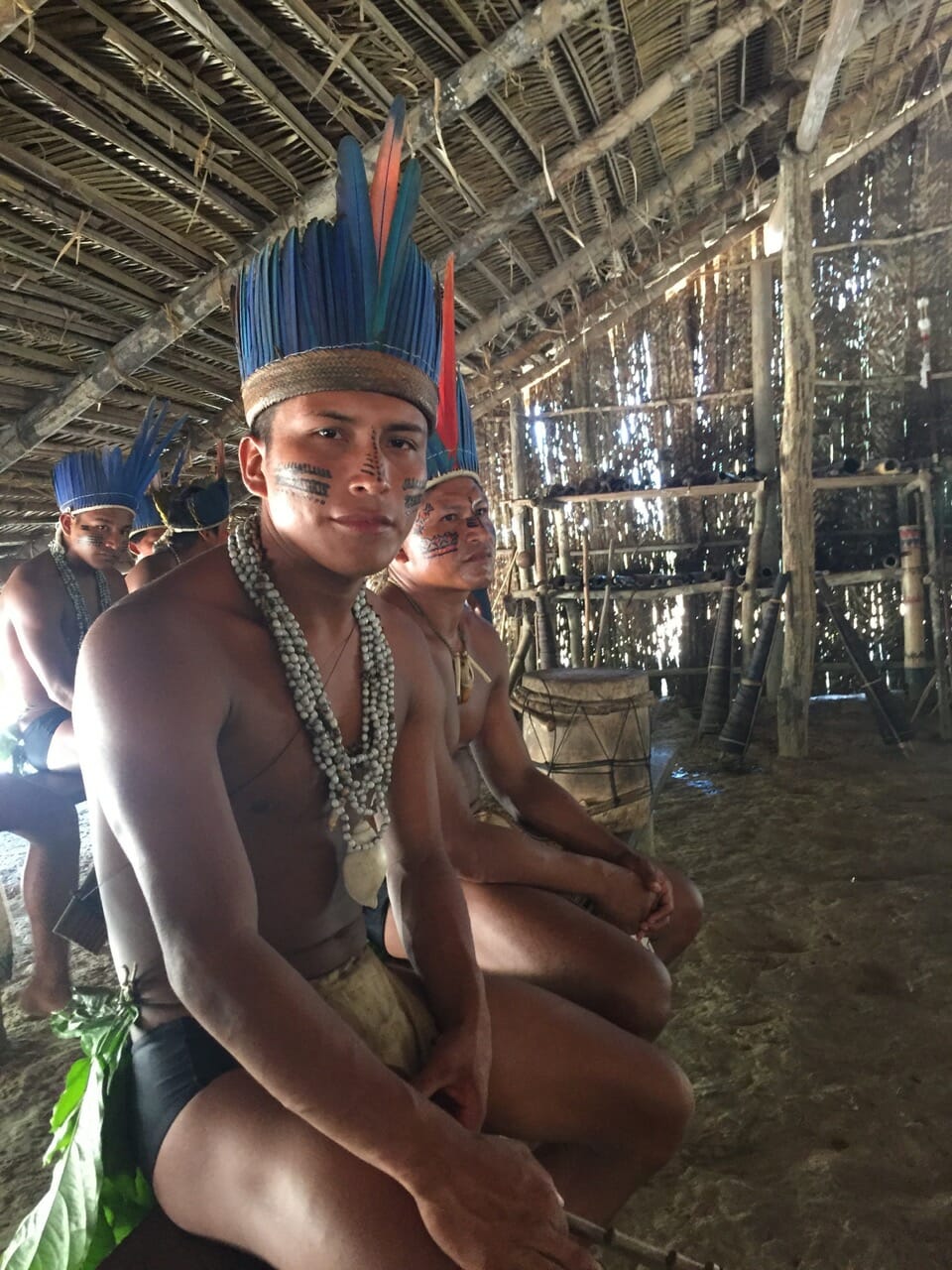
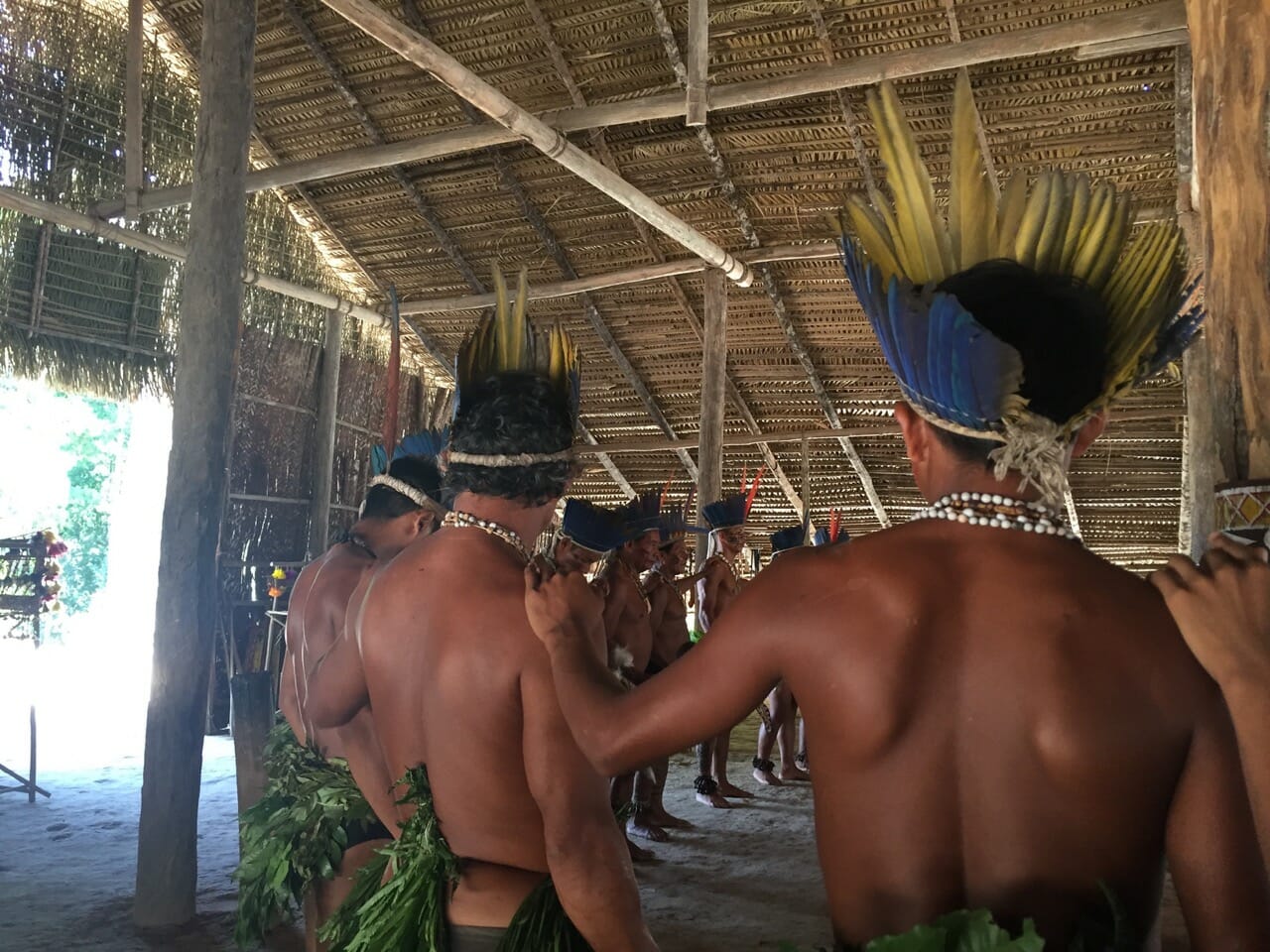
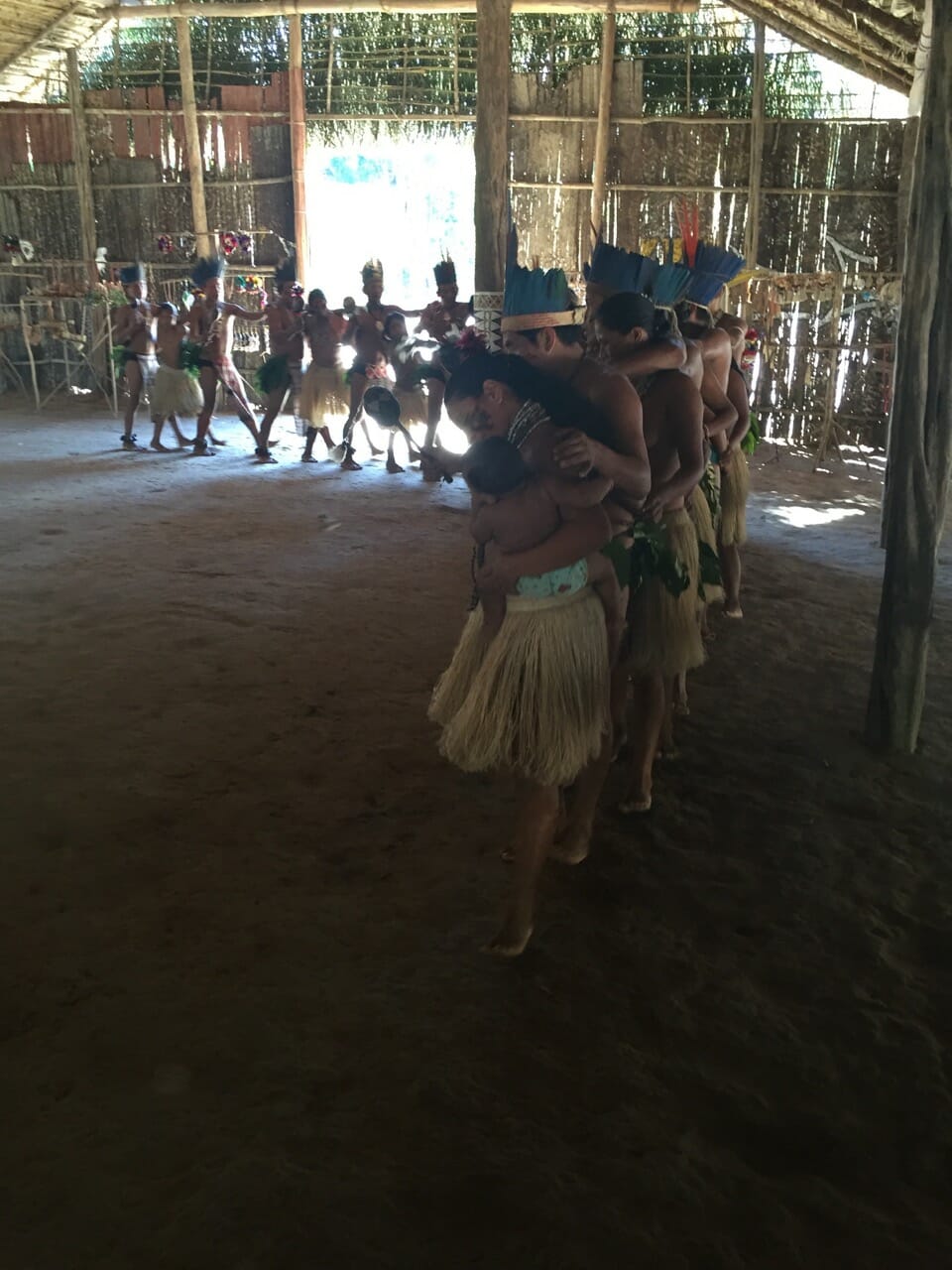
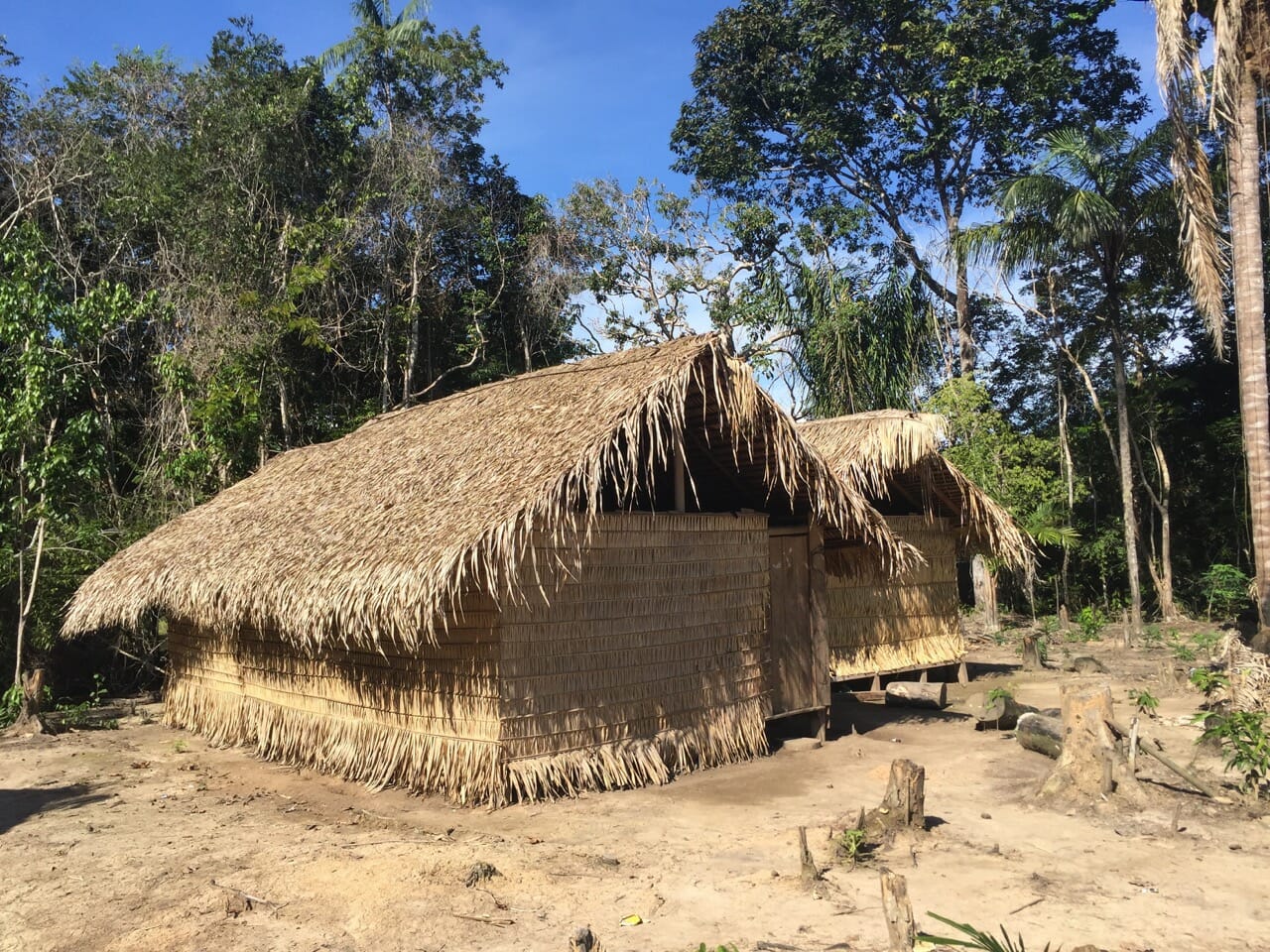
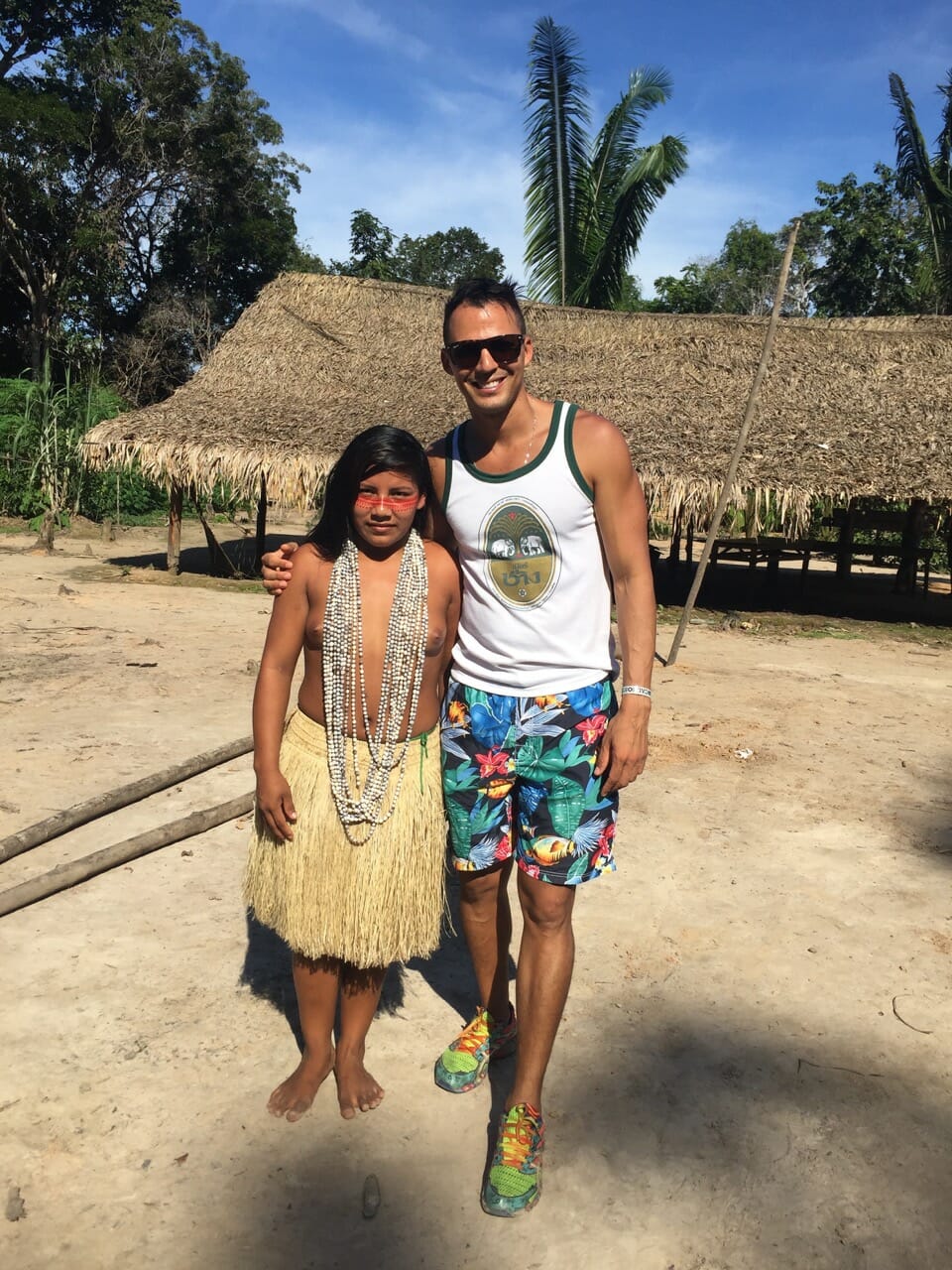

1 thought on “Visiting an Indigenous Tribe in the Amazon, Brazil”